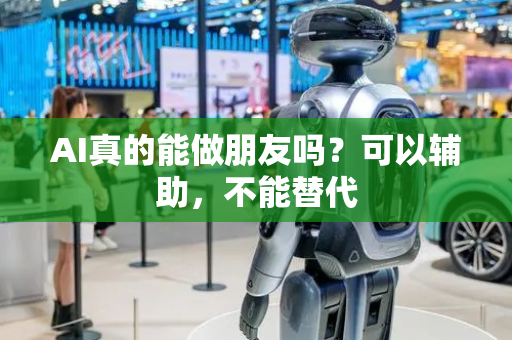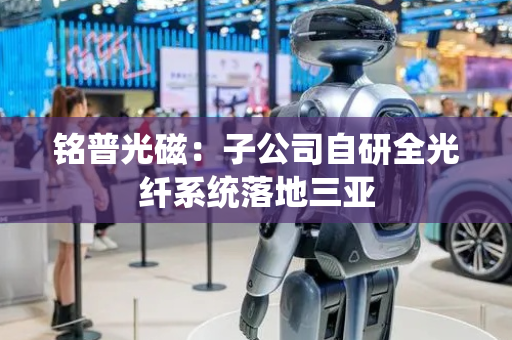作为国家“东数西算”工程京津冀算力枢纽节点,位于怀来大数据产业基地的张家口智算中心建设项目是中国移动落实国家战略、构建全国一体化算力网络的关键落子。锚...
2025-08-21 0
From left to right: Wang Xingxing, Founder, CEO, and CTO of Unitree Robotics; Rev Lebaredian, Vice President of Nvidia Omniverse and Simulation Technology; Wang He, Assistant Professor at Peking University and Founder & CTO of Galbot.
TMTPOST — The next wave of artificial intelligence is physical, and Nvidia CEO Jensen Huang is making a clear bet on its future. The recent launch of the Nvidia Jetson AGX Thor developer kit, a specialized chip for humanoid robots, signals a new phase in the race for embodied intelligence.
Priced at $3,499, the Jetson Thor offers a massive leap in performance, boasting 7.5x the AI computing power and 3.5x the energy efficiency of its predecessor.
In a move reminiscent of Nvidia's early support for OpenAI, the first batch of these powerful chips has been delivered to China’s Galbot. The company’s robot, also named Galbot, has become the world's first to internally deploy the Thor chip, showcasing its advanced capabilities at the 2025 World Robot Conference (WRC). During a live industrial demonstration, the robot’s vision-guided handling and advanced planning drew a crowd, a powerful testament to the potential of this new hardware.
This collaboration highlights a broader trend: China is becoming a hotbed for embodied intelligence innovation. The country is home to a rapidly growing number of robotics companies, a large pool of top-tier AI talent, and a robust manufacturing ecosystem. These factors, combined with significant investment, are positioning China to be a global leader in the field.
At the WRC, a panel discussion featuring Nvidia's Rev Lebaredian and Chinese robotics leaders Wang Xingxing of Unitree Robotics and Wang He of Galbot offered a glimpse into a future shaped by general-purpose robots.
"All robotics companies present today... share the common goal of building general-purpose robots," said Wang He, who also serves as an assistant professor at Peking University. He believes these robots will be the next revolutionary product, unlocking a market worth trillions of dollars.
Wang He boldly predicted that the output value of humanoid robots will increase tenfold every three years. "Right now, the leading companies are selling 1,000 units; in three years, it will be 10,000 units; and in another three years, 100,000 units," he stated. If realized, this would lead to a market valued at hundreds of billions of RMB within six years, surpassing the entire industrial robotic arm market. Looking further ahead, he envisions a trillion-dollar market within a decade, potentially rivaling the automotive and smartphone industries.
Galbot's approach to this future is a departure from a purely humanoid form. Its G1 robot features a wheeled chassis with dual arms, designed for industrial-grade safety, long battery life, and reliable at-scale deployment. The company's focus on practical, commercial applications is evident in its launch of the world's first fully autonomous robot pop-up store, the "Galaxy Capsule," which is now operational in Beijing. This push toward commercialization is driven by a series of foundational large models, including TrackVLA for autonomous navigation and GraspVLA for zero-shot object grasping. The company credits Nvidia's comprehensive simulation engine for its ability to train these models using 99% synthetic data, a key factor in accelerating its development.
Wang Xingxing, founder of Unitree Robotics, shares the vision of general-purpose robots, viewing humanoid robots as the "most ideal form" for achieving Artificial General Intelligence (AGI). He believes that as AI models become more powerful, the hardware will become less of a limiting factor, envisioning a future where assembling a humanoid robot is as straightforward as building a PC today.
Unitree has made a name for itself with highly competitive and affordable humanoid robots. The company recently released a new model priced at around 39,000 RMB ($5,400), which Wang Xingxing says offers excellent performance at a globally competitive price.
While the hardware is "good enough," Wang Xingxing believes the biggest bottleneck remains the lack of generalizability in embodied intelligence models. He notes that the industry lacks a unified architecture, which is slowing progress. He sees a potential breakthrough in world models—like the one recently demonstrated by Google DeepMind—which could allow robots to "imagine" and predict outcomes before acting.
Wang Xingxing predicts that the "ChatGPT moment" for humanoid robots could arrive within 1-3 years, with widespread implementation in the next 3-5 years. He emphasizes a strategy of bold experimentation and continuous model development, with the ultimate goal of achieving "real-time generation of any arbitrary action."
Nvidia's Rev Lebaredian outlined the company’s three-part strategy to support the robotics revolution. Nvidia is building three types of computers: the robot’s onboard computer, the AI factory computer, and the simulation computer. The onboard computer, such as the Jetson Thor chip, refers to the computing power embedded within the robot itself.
The AI factory computer, like the DGX and HGX systems, is where the robot's "brain" is developed by processing massive datasets. Finally, the simulation computer, which runs the Omniverseplatform, allows for the creation of synthetic data and the safe, rapid testing of robots in a virtual environment.
Lebaredian underscored the urgent need for this technology, arguing that a declining global population will lead to stagnant economies unless an "artificial population" of robots can boost productivity. He praised China's unique advantage, noting its massive scale, deep expertise in manufacturing, and large pool of talented AI researchers and developers, all of which create an unparalleled ecosystem for the rapid development and mass production of physical AI.
The convergence of cutting-edge hardware from Nvidia and the ambitious innovation of Chinese companies like Galbot and Unitree Robotics signals that the era of embodied intelligence is not just a distant dream, but a tangible reality in the making.
相关文章

作为国家“东数西算”工程京津冀算力枢纽节点,位于怀来大数据产业基地的张家口智算中心建设项目是中国移动落实国家战略、构建全国一体化算力网络的关键落子。锚...
2025-08-21 0

从昨天夜间至今天上午京城又迎来一波降雨过程。根据北京市气象台发布的信息,8月20日8时至21日8时降水量(毫米):全市平均8.7,城区平均(朝,海,丰...
2025-08-21 0

近日,在全省通用航空飞行服务站服务范围协调会上,江苏(镇江大路)飞行服务站的战略定位和服务范畴得到进一步明确,该站将负责镇江及周边区域的飞行服务工作,...
2025-08-21 1

在传媒行业的浪潮中,有人始终屹立潮头,有人则在转折处选择了不同的航向,最终走向了截然不同的人生。涂经纬的经历,便是这样一个充满起伏与变化的故事。她曾是...
2025-08-21 1

最近这国际局势,那可真是热闹得很。先是美俄两国领导人在阿拉斯加搞了个会晤,这可是吸引了全世界的目光。紧接着呢,又有消息传出,韩国总统李在明计划派特使团...
2025-08-21 1

当前基孔肯雅热疫情防控情况如何?感染后有无后遗症?感染病毒的蚊子有何特性?全国有何防控举措?……国家疾控局赴佛山工作组专家接受新华社专访,解答公众关心...
2025-08-21 2

读者来问您好,我是一个性格内向的人,不擅长社交。自从下载了几款AI程序后,每当有烦恼、不开心的时候,我就习惯找它解闷、倾诉,最近我发现自己越来越依赖它...
2025-08-21 1

铭普光磁消息,铭普光磁旗下专注于光纤传感技术创新的核心子公司——珠海任驰光电科技有限公司(简称“珠海任驰”),在海南三亚海域成功布放全光纤三分量海底地...
2025-08-21 1
发表评论